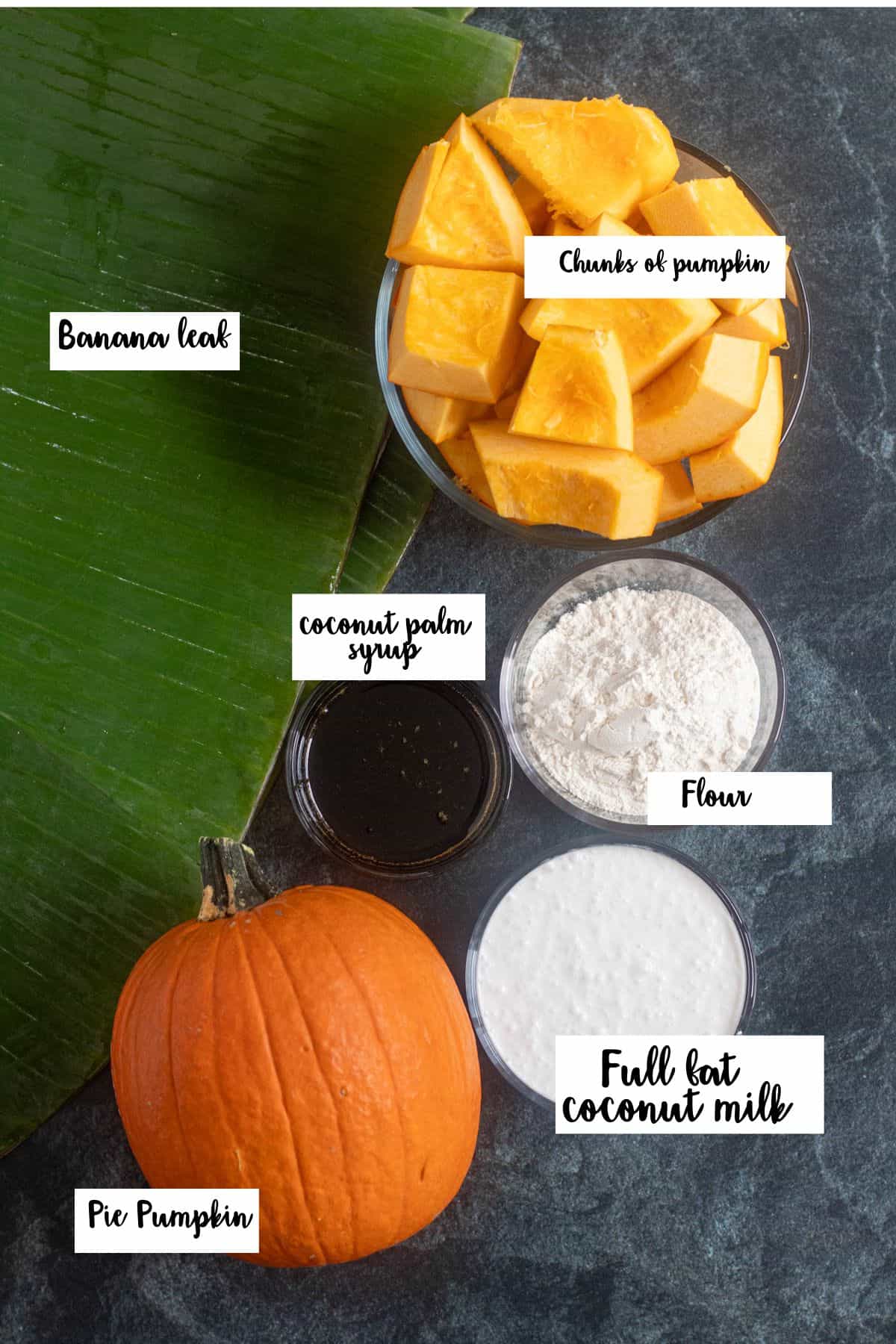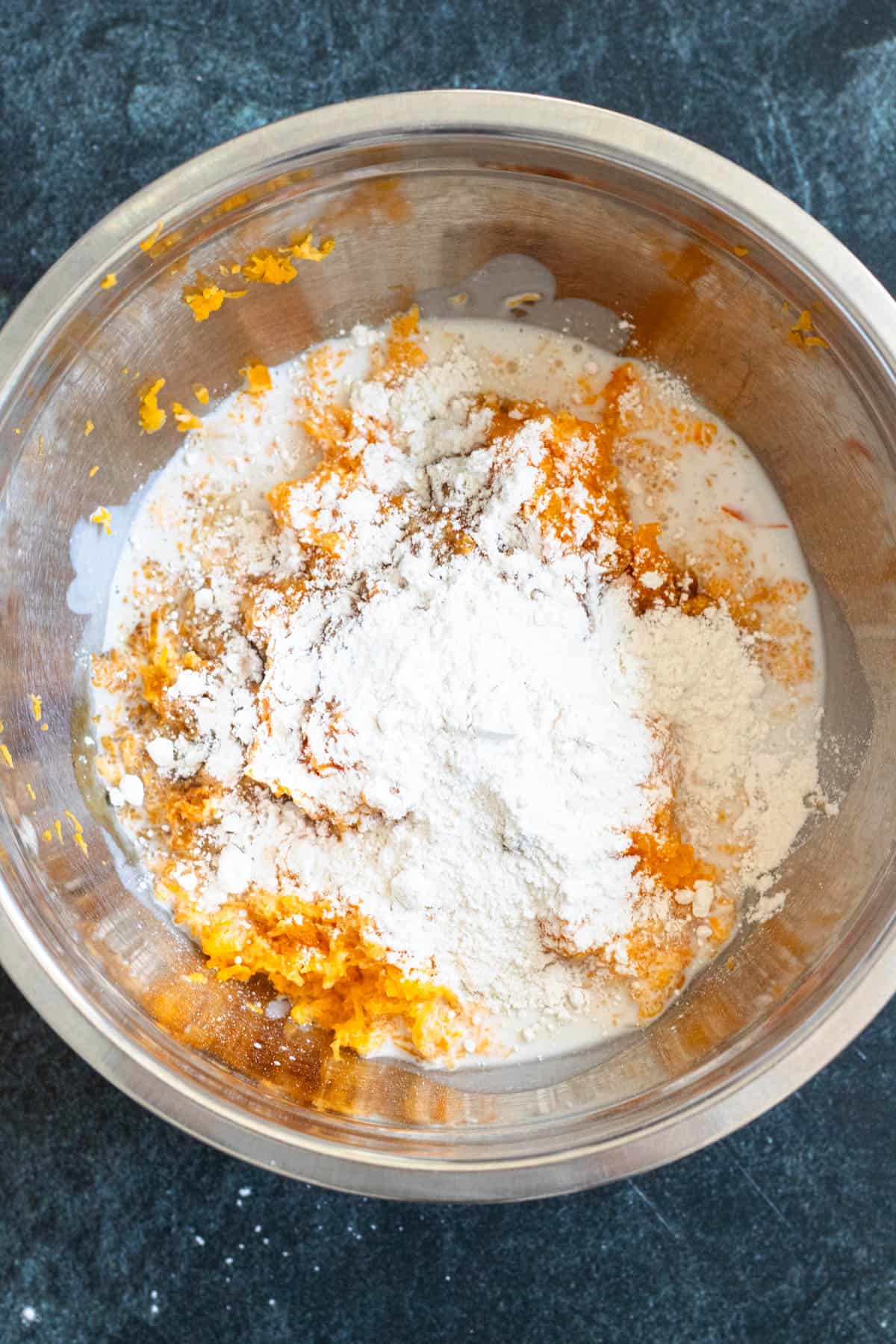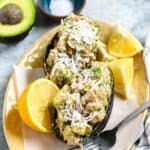Buatoro is a moist, rich cake made from grated pumpkin or taro. This delicious dessert from Kiribati is easy to put together and full of unique flavor and texture you won’t want to miss!

“Hello Reader! I try my hardest to research recipes as best as I can before posting to ensure I am representing each culture correctly. If this recipe is from your country and I have made a mistake or you have suggestions for how to make it more authentic, I would love to hear! Please leave a comment below letting me know what should be different, and I will rework the recipe. It is always my intention to pay homage and respect to each cultural dish that I cook. Thanks for reading!”
Buatoro is a recipe that comes from the small Oceanic country of Kiribati, located southwest of Hawaii in the Pacific Ocean. As an island country with strong Polynesian influences, Kiribati cuisine often calls for a lot of fish, coconut, and rice. This recipe fits right along with that.
Originally this recipe was made with shredded taro and cooked in an earth oven, but the recipe in this blog post makes Buatoro a bit more accessible while maintaining as much authenticity as possible.
My recipe calls for grated pumpkin cooked with coconut cream and coconut palm sugar that makes it sticky and sweet.
Buatoro is difficult to describe. It’s part pudding, part cake, sweet but not sugary. Honestly, it’s just something you’ve got to taste to understand!
Recipe Origins
There are not many recipes for Buatoro, or any I-Kiribati cuisine, on the internet. Some that you may find call for canned meat and cabbage, along with the pumpkin, resulting in a savory main dish.
From my research, traditional buatoro (pronounced bwaturo) is meant to be a sweet dessert or side dish. Those savory adaptations are not typically enjoyed in Kiribati.
Buatoro was originally made with taro, which is a root vegetable that has a naturally sweet flavor and a starchy texture, but it can be made with many different alternatives.
Buatoro has always been wrapped in banana leaves to lock in moisture, but traditionally this package of goodness was placed in an earth oven to cook slowly over coals. Today it is usually cooked in an oven in a small bread pan.
Why Make This Recipe
- Few Ingredients: It just takes five ingredients to make buatoro, which is simplicity we all could use more of!
- Unique Dessert: Buatoro is a dish that is perfect for stepping out of your comfort zone of all the usual cakes and cookies and trying something different!
- Taste of Kiribati: As I said earlier, there aren’t many Kiribati recipes that have made their way to the United States. This is one way to explore this small country you may not have heard about before.
What Do I Need to Make This Recipe?
Ingredients
Here is a visual overview of the ingredients in the recipe. Scroll down to the recipe at the bottom for quantities.

- Pie Pumpkin: The traditional choice is Grated Babai (Swamp Taro), you can also substitute normal taro, uncooked plantain, cooked rice, or cooked breadfruit
- Coconut Palm Syrup: The traditional name is kamaimai, also called Coconut Toddy Syrup. You can also use melted coconut sugar.
- Full Fat Coconut Milk: You may also see this called Te Ran Ben. If you are unable to locate some high-quality coconut milk you could substitute whole milk.
- All-purpose Flour
- Banana Leaf: This is to wrap the cake in as it cooks. The traditional choice is Babai leaves which is the local name for giant swamp taro leaves. You could also use aluminum foil in a real pinch
Tools
- Box Grater
- Mixing Bowl(s)
- Wooden Spoon
- Kitchen Twine
- 9×5” Loaf Pan
How to Make This Recipe
Step One: Prepare the Batter


Preheat the oven to 350 degrees Fahrenheit.
Peel the pumpkin and grate it on the finer shredding holes of a box grater.
Add the grated pumpkin, coconut palm syrup, coconut milk, and all-purpose flour into a large mixing bowl and mix everything together until a thick batter is formed. You can add more flour if necessary.
Step Two: Prepare the Pan


Boil a pot of water. Position the banana leaf in a sink (I propped mine up on a strainer) and carefully pour the boiling water over the leaf. This will make the leaf more bendable!
Line a 9×5” loaf pan with the banana leaf and pour the buatoro batter into the banana leaf. Fold the banana leaf over the top of the buatoro, sealing the batter in.
Step Three: Bake

Set the timer for 1 ½ hours and bake until the batter solidifies into a gooey cake consistency. I baked my buatoro for about 2 hours total.
Notes

- The consistency of the batter for buatoro is like a thick pancake batter and the cooked cake is very thick, heavy, and moist. The end result will not be a baked cake consistency but will instead be more of a pudding consistency on the inside.
- Steep your banana leaves in hot water to make them softer and more pliable. I cut mine to the same length as my bread pan for a good fit and let the other sides hang over the edge to easily fold over the top.
- The exact moisture content of the vegetable or pumpkin you use may impact how long this dish cooks. Getting it just right for your preference may take practice but that’s okay! “Tekeraoi” is the I-Kiribati way to say good luck!
Recipe Sources
This Recipe is researched using this recipe from @Brento Box on TikTok and this recipe from Barefoot in Jandals which is based on instructions from a Kiribati citizen.
Did you enjoy this recipe for Buatoro from Kiribati? If so, make sure to check out these other recipes I picked out just for you:

Buatoro from Kiribati
Equipment
- Kitchen Twine
Ingredients
- 1.25 lb pie pumpkin, peeled, gutted and cubed Pie Pumpkin (about 1 pie pumpkin). The traditional choice is Grated Babai (Swamp Taro), you can also substitute normal taro, uncooked plantain, cooked rice, or cooked breadfruit.
- ¼ cup Coconut Palm Syrup, The traditional name is kamaimaialso. Also called Coconut Toddy Syrup or you can use melted coconut sugar
- ¾ cup Full Fat Coconut Milk, + 2 tbsp, also called Te Ran Ben (about ½ of a 13 oz can)
- ¼ cup All purpose Flour
- 1 Banana Leaf, The traditional choice is Babai leaves which is the local name for giant swamp taro leaves
Instructions
- Preheat an oven to 350 degrees Fahrenheit.
- Peel a single pumpkin and grate it on the finer shredding holes of a box grater.
- Add the grated pumpkin, ¼ cup coconut palm syrup, ¾ cup coconut milk, and ¼ cup all purpose flour into a large mixing bowl and mix everything together until a thick batter is formed. You can add more flour if necessary.
- Boil a pot of water. Position the banana leaf in a sink (I propped mine up on a strainer) and carefully pour the boiling water over the leaf. This will make the leaf more bendable!
- Line a 9×5” loaf pan with the banana leaf and pour the batter into the banana leaf. Fold the banana leaf over the top of the batter, sealing the batter in.
- Set the timer for 1 ½ hours and bake until the batter solidifies into a gooey cake consistency. I baked mine for about 2 hours total.
Notes
-
- Pie Pumpkin: The traditional choice is Grated Babai (Swamp Taro), you can also substitute normal taro, uncooked plantain, cooked rice, or cooked breadfruit
- Coconut Palm Syrup: The traditional name is kamaimai, also called Coconut Toddy Syrup. You can also use melted coconut sugar.
- Full Fat Coconut Milk: You may also see this called Te Ran Ben. If you are unable to locate some high quality coconut milk you could substitute whole milk.
- All-purpose Flour
- Banana Leaf: This is to wrap the cake in as it cooks. The traditional choice is Babai leaves which is the local name for giant swamp taro leaves. You could also use aluminum foil in a real pinch
- The consistency of the batter is like a thick pancake batter and the cooked cake is very thick, heavy, and moist. The end result will not be a baked cake consistency but will instead be more of a pudding consistency on the inside.
- Steep your banana leaves in hot water to make them softer and more pliable. I cut mine to the same length as my bread pan for a good fit and let the other sides hang over the edge to easily fold over the top.
- The exact moisture content of the vegetable or pumpkin you use may impact how long this dish cooks. Getting it just right for your preference may take practice but that’s okay! “Tekeraoi” is the I-Kiribati way to say good luck!






Leave a Reply